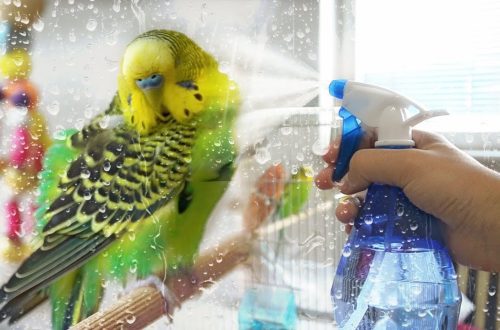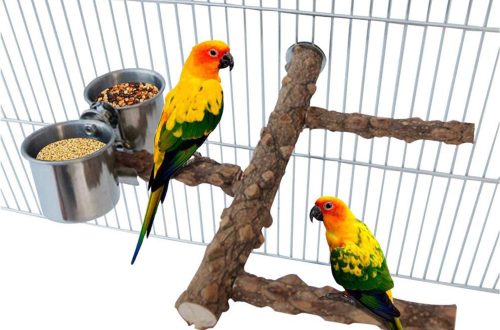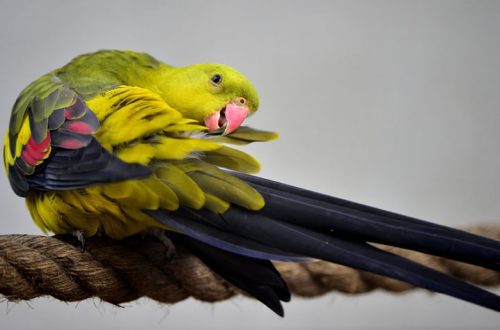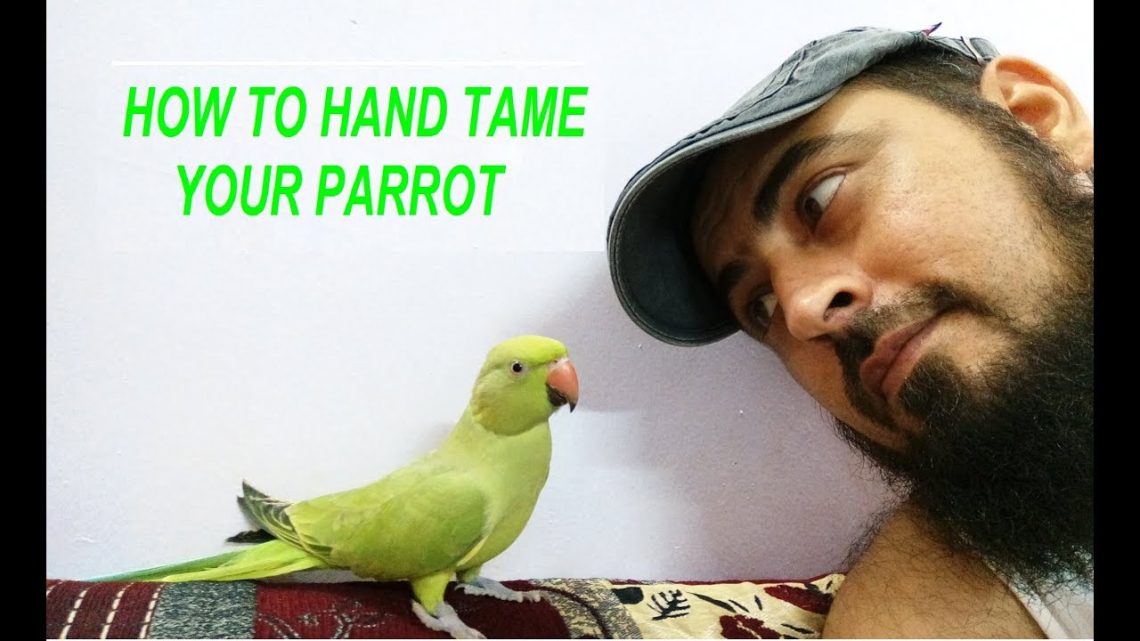
Taming a parrot to the hand
The domestication of a feathered pet does not, of course, take place immediately upon coming home from the store with it.
Contents
Initial adaptation
First the parrot must will adapt to a new environment, get used to new smells and sounds. Then you begin to gradually accustom him to you. First of all, to the sound of your voice. Try to address him by name as often as possible, while the intonation should be affectionate, calm. In no case do not allow yourself to raise your voice or make sudden movements with it. This stage can take up to several days.
Secondly, you start teach a feathered pet to eat in your presence. Having poured food into his feeder, affectionately invite him “to the table”, calling him by name, and sit next to him in his field of vision. Sit quietly, without moving or talking. This stage is also not a quick one: it will take from several days to weeks, depending on the temperament of the bird and on its past experiences with humans. As soon as you notice that the parrot does not shy away from the feeder in front of you, but calmly and with appetite gobbles up what is offered, then you have achieved the desired result.
Third stage experts call feeding. This is what scares the bird so much at first – the constant violation of the feathered personal space by a person. However, we cannot help but feed, and even more so, in the first weeks of the presence of a bird in the house, on the contrary, it is necessary to feed as often as possible – up to 8 times a day. Portions, of course, should be reduced. That is, more often, but less. The parrot will undergo this procedure more often and addiction should go faster.
Remember that you need to stock up on remarkable patience, do not force things – let the parrot decide whether he is ready or not to move to the next step in your relationship.
Something to take into account.
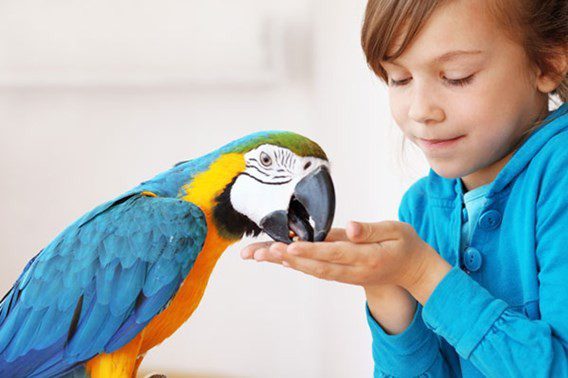
There is another important nuance that should be taken into account at first. This is the position of the cell. Do not put the cage too high so that the pet does not look down on everyone and does not turn into a dictator in the future. Do not set too low, then, on the contrary, the parrot will feel pressure on itself and constant fear of you, and this, of course, will prevent you from establishing a trusting relationship. The best height is at your eye level. This will help build equal relationships.
Taming to the hand
As soon as the first three stages are completed, you can proceed directly to getting used to the hand.
Finger food
We begin this stage by offering food to the feathered pet in fingers inserted through the bars. Offer your favorite treat. To find out the taste preferences of your parrot, before that you will need to watch him. Pay attention to what kind of food offered in the feeder the bird eats first. Having found out this, do not pour more tasty treats into the feeder, but use it only for classes. So, sticking your hand out with a treat clutched in your fingers, freeze and move, just gently talk to your pet, inviting him to try. At first, the parrot will refuse, but over time, having overcome its fear, the bird will take the food offered to it. Once this happens, do not rush to move on to the next step – you need to carefully fix this one. Continue this exercise for at least a week.
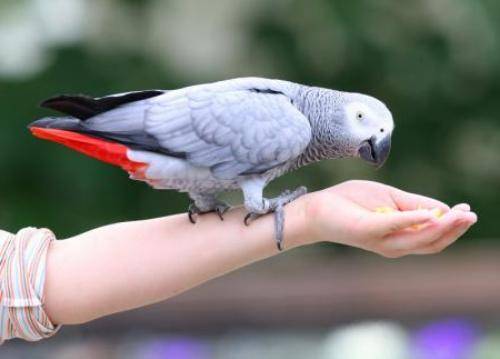
Food in the palm of your hand
Having consolidated the learned skill, it’s time to go directly to the hand. Pour food into your hand and quietly, without sudden and quick movements, put your hand into the cage and hold it there for a while. Of course, at first, refusal will again follow. But this is normal – the parrot needs to get used to the new object in his home, even with food. If the addiction process is too long: the parrot not only does not approach the hand, but also continues to shy away from it and hide in a corner, try the starvation method.
fasting method
The fasting method is based on the fact that the bird will be hungry and whether it likes it or not, it will have to overpower itself in order to get enough. It is best to use this system in the morning – before the bird has breakfast. Waking up, the parrot, as usual, will rush to the feeder, in which there will be nothing. At this time, you, as a savior-deliverer, offer her food on your hand. Not instantly, but the bird will still begin to approach the outstretched hand and try the food. At first, grabbing the grain, she will again run back to the protective corner. At this point, the main thing is that you do not move or move.
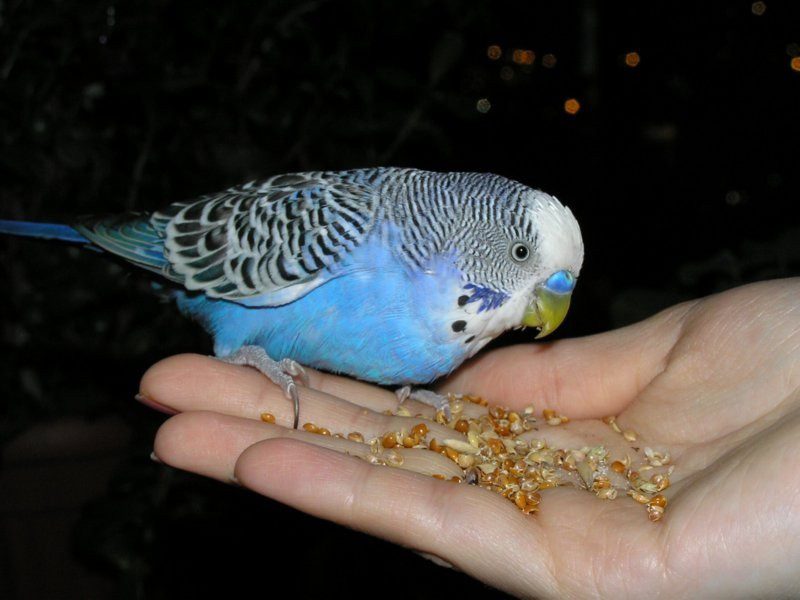
The fasting method is based on the fact that the bird will be hungry and whether it likes it or not, it will have to overpower itself in order to get enough. It is best to use this system in the morning – before the bird has breakfast. Waking up, the parrot, as usual, will rush to the feeder, in which there will be nothing. At this time, you, as a savior-deliverer, offer her food on your hand. Not instantly, but the bird will still begin to approach the outstretched hand and try the food. At first, grabbing the grain, she will again run back to the protective corner. At this point, the main thing is that you do not move or twitch. Your pet must understand that your hand does not carry any danger, except for getting taste pleasure. Over time, fear will recede, but you still continue this exercise for some more time until the acquired skills are fully consolidated. At this stage, the hand with food should not be fully opened: the fingers are, as it were, in a half-clenched fist.
Food in an open hand
Once you understand that you have completed this stage, you can move on to learning how to feed directly on your hand. To do this, we completely open the palm, pouring food into the very center. Now, in order to get to the food, the bird will need to jump onto his hand. At this moment, your calmness and endurance are again important: do not shy away, do not scream with joy – all this will scare the feathered one, and all classes will have to start from the very beginning.
Carrying out on the arm from the cage
After this, the final stage of the final taming to the hand will remain – the removal of the bird on the hand from the cage. We teach small individuals to sit on the finger, large ones – on the hand. This division is explained very simply: the girth of the legs of each of them corresponds to the thickness of either a finger or a hand. In order for the pet to sit on the finger, we bring the finger to its paws and stick it to the tummy between the paws. The parrot will quickly understand what they want from him and do what is needed. Once again, we remind you that at all stages of taming, in no case do we shout and do not make sudden movements. On the contrary, we talk with a parrot extremely affectionately and gently. He should always associate your voice with calmness and protection.
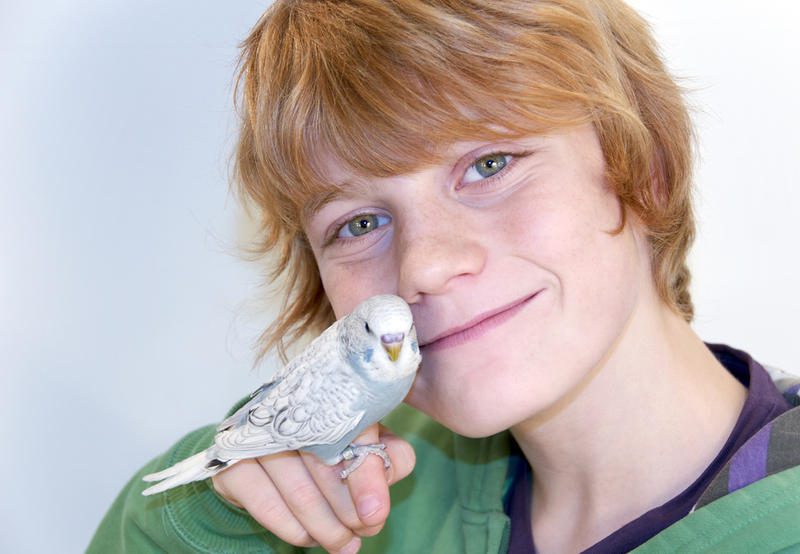
Of course, taming a parrot is not an easy task, requiring patience and time for both a person and a bird. It will be different for each of you. There are some criteria on which the speed and fruitfulness of parrot taming depends: • Individual characteristics and character of the bird • Regularity of classes • Consciousness of the owner’s actions during training
Do not hurry. Remember that a parrot is not a toy, it is a living being, it is a person with his own desires, character and inclinations. Learn to understand each other, and then you will find a real comrade for yourself.
There are also interesting options on the video step by step:
1. After shopping in the store:
2. Step two: we establish communication.
3. Step three: tame to the hand inside the cage.
4. Step four: tame to the hand outside the cage.



